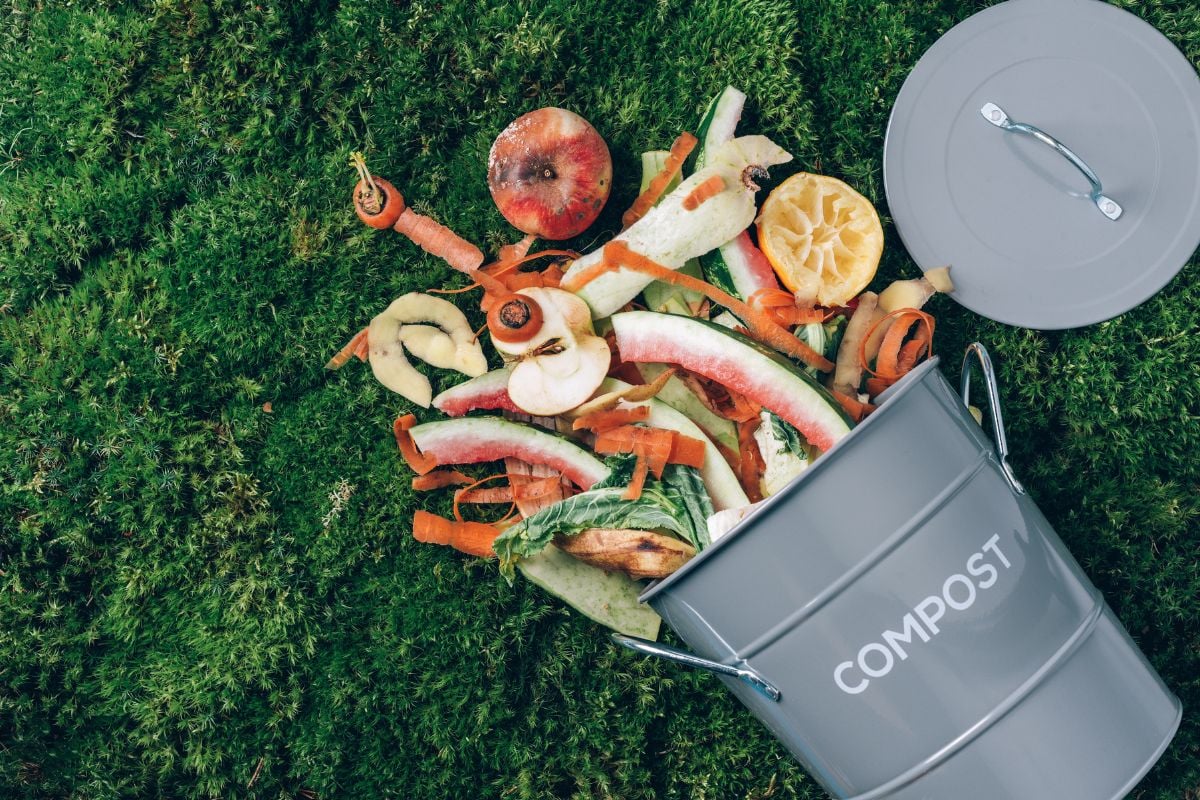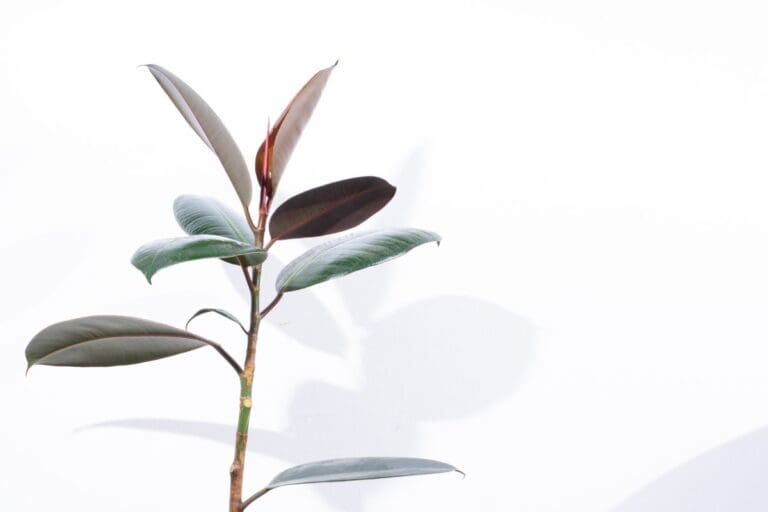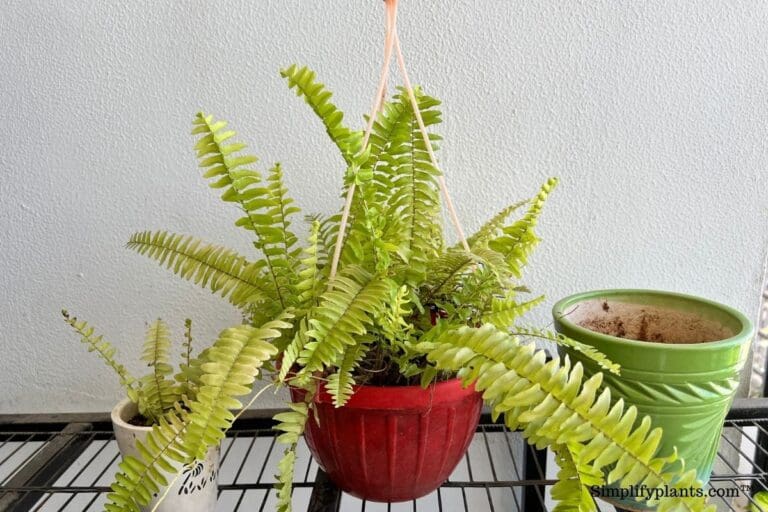Should I fertilize My Chinese Evergreen? (How Often+Best Fertilizer For Aglaonema)
Chinese Evergreen or Aglaonema is a popular houseplant with low maintenance and stunning foliage. Fertilization is an integral part of a plant care routine, and we are going to understand the fertilization requirement of the Chinese Evergreen in this article.
In general, the Chinese evergreen plant can grow with or without fertilization. However, it is recommended to fertilize them once or twice a year during spring and summer for optimum growth. You can use any balanced fertilizer with NPK ratio 20:20:20 for Chinese evergreens.
Some people even like to fertilize their Chinese Evergreen with a fish emulsion or slow-release fertilizer during the growing season.
Don’t worry if you don’t know how a liquid or a slow-release fertilizer works. I will cover all the details in this article, so keep reading.

Please note: Simplify Plants is reader-supported. Some links in the post are affiliate links and I get a commission from purchases made through links in the post.
Why fertilizing Chinese Evergreen is important?
One might not understand the importance of fertilizing Chinese Evergreen, but it needs fertilizers to show significant growth, especially during the growing season.
When we repot the Chinese Evergreen after bringing it home, we give it a nutritious potting mix that can provide the required nutrients to support its growth.
However, every time you water the Chinese Evergreen, some nutrients get depleted from the soil. Soon, the soil fails to provide the nutrients that the plant needs, which is why people take the help of fertilizers.
Water and soil alone can’t provide enough nutrients to your Aglaonema plant. Also, they can’t provide enough micro and macronutrients that fertilizers contain.
Without these nutrients, the plant might become weak. Without the right amount of nutrients, the Chinese Evergreen will have:
- Weak roots
- Leggy growth
- Discolored foliage
- Leaves losing variegation
- Drooping leaves
- Slow growth
Check the amount and frequency of fertilization if you notice any of these signs in your Chinese Evergreen plant.
What nutrients do fertilizers have in them?
Now, before you get fertilizer for your Chinese Evergreen, you must understand its composition, which nutrients it contains, and how those benefit your plant.
The nutrients are divided into two main parts: macronutrients and micronutrients. Each of these contains a few minerals that are necessary for the plants. Let’s see which elements I am talking about.
Macronutrients: These are essential elements that plants need. You’ll find the primary Nitrogen, Phosphorus, and Potassium that constitute the NPK in this bracket.
Besides these three crucial elements, it contains a few other elements and minerals.
- Nitrogen
- Phosphorus
- Potassium
- Calcium
- Magnesium
- Sulfur
- Hydrogen
- Oxygen
- Carbon
Micronutrients: Fertilizers contain smaller quantities of micronutrients. The small quantities are enough for helping your plant, so these are not required in larger quantities.
- Iron
- Copper
- Manganese
- Zinc
- Boron
What is the best fertilizer for Chinese Evergreen?
Many fertilizers are available, but find the right one for your Chinese Evergreen. If you pick the wrong fertilizer, you’ll end up overfertilizing your Chinese Evergreen plant.
I already told you that the Chinese Evergreen plant needs 10:10:10 NPK fertilizer which means the ratio of the Nitrogen, Phosphorus, and Potassium should be equal and 10% each.
Not every plant will require this ratio, but many plants do well with a 10:10:10 NPK fertilizer as this is a well-balanced fertilizer. Now let’s understand how these primary nutrients help the plant.
| Nutrients | Function |
| Nitrogen | Promotes foliage growth Helps in photosynthesis |
| Phosphorus | Promotes root growth Encourages blooms and fruit growth |
| Potassium | Increases the immunity of the plant Helps in regulating water to all parts of the plant |
Types of fertilizers
Three types are fertilizers are available in the market, which are:
- Liquid or water-soluble fertilizer
- Slow-release fertilizer
- Granular fertilizer
Now let’s discuss these in detail.
Liquid fertilizer

Liquid fertilizer is a popular option and the best one for most houseplants. You get these in the liquid form, which is called liquid fertilizers, and the powder form you can mix with water which is called water-soluble fertilizers.
If you want to avoid overfertilization, you can dilute the fertilizer to make it half-strength and use that on your Chinese Evergreen. If you use the recommended dose, the plant might get overfertilized.
Slow-release fertilizer
As the name suggests, slow-release fertilizers release the nutrients slowly into the soil. These work well for plants growing in the garden.
Slow-release fertilizers will work when you water your plant. Some amount of fertilizer will get released with the water.
I don’t suggest this for your Chinese Evergreen as you can’t control how much nutrients get released into the soil as you water it.
Granular fertilizer
Granular fertilizers are often used for outdoor plants. You get these in pellets, and you need to put them in the soil.
Unlike slow-release fertilizers, granular fertilizers give out all the nutrients at once. So you can understand why it is not the best for your Chinese Evergreen. It can overwhelm and overfertilize the plant with all the nutrients.
Compost as fertilizer for Chinese Evergreen

Many people don’t like opting for artificial fertilizers available in the market. So, for them, compost is a great option.
Since compost contains all organic matter, you don’t need to worry about chemical and non-organic elements.
If you add some compost to your Chinese Evergreen, the nutrients will slowly get inside the soil and make it nutritious, which benefits the plant.
However, there are 3 downsides of using compost as the only fertilizer for your Chinese Evergreen:
- Compost can produce an unpleasant smell.
- You don’t know how much nutrition the plant gets.
- Compost will not have all the nutrients the plant needs.
You can still use compost for your Chinese Evergreen, but don’t only use compost. Also, use fertilizer to help the plant get all the nutrition it needs.
Recommended Fertilizer for Chinese Evergreens

A common problem that every new gardener faces is which fertilizer should I choose for my Chinese evergreens. With a wide variety of products to choose from, it can be challenging to pick the right product for your plants.
So, to help you with the dilemma, I am here to recommend some of my top picks. I have personally used all these products and have got great results. So, here are the recommended fertilizers for your Chinese evergreen:
- Jacks Classic 20-20-20 All Purpose Fertilizer
- Triple 10 All Purpose Liquid Fertilizer 10-10-10
- Espoma Company Organic Indoor Plant Food
Do Chinese Evergreen like coffee grounds?
Many people like to use leftover coffee grounds for fertilizing their houseplants. It can benefit houseplants that enjoy slightly acidic soil, but you should use coffee grounds moderately.
Don’t put coffee grounds directly on the soil as that can be harmful. Use coffee grounds as liquid fertilizer or add them to the compost.
If the soil pH of your Chinese Evergreen is already acidic, you can skip using coffee grounds as these can make the soil even more acidic.
How much fertilizer does a Chinese Evergreen need?

A Chinese Evergreen doesn’t require a whole lot of fertilizer. It requires a small dose every time you fertilize it.
If you use a liquid fertilizer, you can dilute it with water and make it half-strength. This will reduce the chances of overfertilization.
If you want to fertilize your Chinese Evergreen with compost, you can only use a handful and add it to the soil.
Avoid feeding your Chinese fertilizer with a heavy dose of liquid fertilizer or excess compost.
How often should I fertilize my Chinese Evergreen?
The frequency of fertilization depends on the growth rate of your Chinese Evergreen. But on average, you can fertilize the plant once in 2-3 weeks.
However, like most houseplants that go dormant in winter, a Chinese Evergreen will not require any fertilizer during winter. Fertilizing during winter will lead to excess salt build-up that will not get used up and burn the roots.
Many people like to use coffee grounds on their plants during winter instead of fertilizers. Coffee grounds will cause overfertilization but provide the minimum nutrients that the plant needs.
How to fertilize a Chinese Evergreen plant?
Fertilizing plants, including the Chinese Evergreen, is easy. Let’s understand.
- First, water the plant as dry soil will not absorb the fertilizer.
- Next, select the ideal fertilizer that comes with a balanced NPK ratio.
- Now dilute the fertilizer by adding the recommended dose into more water.
- Use this diluted solution to water your Chinese Evergreen.
- If you are using compost, add a handful of it to the soil once in two months.
- Water the plant after fertilizing to spread the fertilizer evenly around the soil.
- If you want to use coffee grounds, you can make a liquid fertilizer out of them and then apply it to your Chinese Evergreen.
What happens if you overfertilize your Chinese Evergreen?

One of the many problems of houseplants is that they can get overfertilized if you don’t use the correct quantity or fertilize too frequently.
If you have overfertilized your Chinese Evergreen, you will notice these signs:
- Yellow leaves
- Brown spots on leaves
- Brown edges on leaves
- Salt build-up on the soil
- Stunted growth
If you want to avoid causing these problems to your Chinese Evergreen, always dilute the fertilizer before applying it.
How to fix an overfertilized Chinese Evergreen?
If you find the signs of overfertilization on your Chinese Evergreen, you can fix the plant with the following steps:
- Inspect the plant and find out the affected parts.
- Prune all the affected and damaged parts and keep the healthy growth on the plant.
- Scrape the excess soil build-up from the soil.
- Soak the remaining soil or give it a good wash to get the excess salt out of the system.
- You can repot the plant with a fresh potting mix also.
- You can resume fertilizing after 6 or 8 weeks.
Final words

Chinese Evergreen is a light feeder, and it requires only a small amount of fertilizer to grow. If you give it some extra fertilizer, thinking it will grow more, you’re mistaken as it will only cause overfertilization.
Fertilize your Chinese Evergreen with a well-balanced fertilizer twice a month or once in 3 weeks and dilute the dose to be on the safe side. If you want to use compost, you can use a handful every 8 weeks.
Avoid fertilizing during winter as the Chinese Evergreen doesn’t need fertilization during the dormant period when it rests. If you overfertilize the plant by mistake, stop fertilizing, remove the affected parts, and wait for the plant to recover.
Reference: Wikipedia, Nasa clean air study, Missouri Botanical Garden, The University of Kansas, NC State University.
Recommended Garden Supplies
| Product Image | Our Recommended Gardening Supplies | Check Offers! |
|---|---|---|
Top Top
Top
Top
Top
Top
Top
Top
Top | rePotme Houseplant and Tropical Classic Potting Soil Mix | Check Offer On Amazon |
 Top
Top
Top
Top
Top
Top
Top
Top | Espoma Organic Indoor Plant Food | Check Offer On Amazon |
 Top
Top
Top
Top
Top
Top
Top
Top | GooingTop LED Grow Light 6000K Full Spectrum Clip Plant Growing Lamp | Check Offer On Amazon |
 Top
Top
Top
Top
Top
Top
Top
Top | Soil Moisture Meter | Check Offer On Amazon |
 Top
Top
Top
Top
Top
Top
Top
Top | Govee Hygrometer Thermometer, Bluetooth Enabled! | Check Offer On Amazon |
 Top
Top | LEVOIT Humidifiers for Large Room(Best For Plants) | Check Offer On Amazon |
 Top
Top
Top
Top
Top
Top
Top
Top | Upgraded DIY Automatic Drip Irrigation Kit, 15 Potted Houseplants Support | Check Offer On Amazon |
 Top
Top
Top
Top
Top
Top
Top
Top | Stainless Steel Heavy Duty Gardening Tool Set | Check Offer On Amazon |
 Top
Top
Top
Top
Top
Top
Top
Top | Bonide Insecticidal Soap | Check Offer On Amazon |
 Top
Top
Top
Top
Top
Top
Top
Top | Bonide 32 oz Spray Neem Oil for Organic Gardening | Check Offer On Amazon |
 Top
Top
Top
Top
Top
Top
Top
Top | Garden Safe Fungicide | Check Offer On Amazon |






